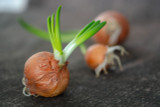How To Grow Pumpkins - From Planting Seeds To Harvest
Growing pumpkins can be a rewarding and fun experience. These colorful and versatile fruits are helpful for many purposes, from carving to cooking. It would help to learn how to grow pumpkins successfully, from sowing seeds to harvesting your crop. Get ready to dig in and discover the secrets to successful pumpkin cultivation.
Choosing the Right Variety
Before you start, choosing the suitable pumpkin variety for your needs is essential. Consider factors such as space availability, growing season length, and intended use. If you have limited space, go for compact varieties like Sugar Pie or Jack-Be-Little. For larger pumpkins, try the classic Connecticut Field or Atlantic Giant. Check the seed packet or nursery label for specific instructions and recommendations.
Preparing the Soil
To grow healthy and productive pumpkins, you need well-drained soil rich in nutrients. Begin by clearing the area of weeds, rocks, and debris. Use a tiller or garden fork to break up any clumps. Mix in some organic matter to make the soil richer and crumbly. Pumpkins grow best in soil with a pH level between 6.0 and 7.5. You can test your soil’s pH with a kit or a meter and adjust it accordingly.
Planting Pumpkin Seeds
You can plant your pumpkin seeds when the soil is warm enough, around 60°F (15°C), without frost risk. To ensure good drainage, make mounds or raised beds for your seeds. Dig holes about 1 to 2 inches deep and place the seeds in them, leaving 2 to 3 feet of space between each seed. If you have more than one row of seeds, keep them 6 to 8 feet apart. Gently water the soil after planting to ensure proper seed germination.
Caring for Young Plants
As your pumpkin seedlings emerge, it is crucial to care for them properly. Water your pumpkin plants regularly, but avoid overwatering them. Pumpkins need plenty of water to grow well, but too much water can cause root rot or fungal diseases. Water deeply, allowing the top few inches of soil to dry before watering again. You can spread some mulch around your pumpkin plants to keep the soil moist, prevent weeds from growing, and regulate the soil temperature.
Providing Support and Space
As your pumpkin plants grow, they may benefit from some support. Consider placing sturdy trellis, cages, or stakes around them to stabilize and prevent sprawling. This is particularly important for larger pumpkin varieties. Additionally, ensure each plant has enough space to spread its vines and leaves. Crowded plants can compete for resources and may lead to smaller or misshapen pumpkins.
Pest and Disease Management
Like any other plant, pumpkins are susceptible to insects and illnesses. Monitor your plants regularly and take preventive measures to protect them. Inspect for common pests like aphids, squash bugs, and vine borers. You can use natural remedies such as insecticidal soaps or organic pesticides. You should also check your pumpkin plants regularly for any signs of diseases, such as powdery mildew or rot, and treat them promptly. Promptly remove and dispose of any infected plant parts to prevent the spread.
Harvesting Ripe Pumpkins
Most pumpkin varieties take around 75 to 100 days to mature. Look for signs that the pumpkins are fully ripe, such as hard skin, deep color, and a dried-out stem. Cut the pumpkins carefully from the vine, leaving a few inches of stem attached.
With these simple steps and patience, you can grow pumpkins and enjoy a plentiful harvest. Discover the freedom of self-sufficiency and ecological farming. Visit Freedom Farms to access resources, products, and expertise.
Recent Posts
-
The Secrets To Growing Radishes In Containers
Container gardening is a popular way to grow vegetables like radishes. Growing radishes in container …26th Jun 2023 -
How To Successfully Grow Onions From Seeds
Many recipes use onions to give a strong taste and smell. Growing onions from seeds is better than b …26th Jun 2023 -
How To Grow Radishes At Home: A Step-By-Step Guide
Growing your radishes at home can be a rewarding and delicious endeavor. These crispy and spicy vegg …26th Jun 2023





